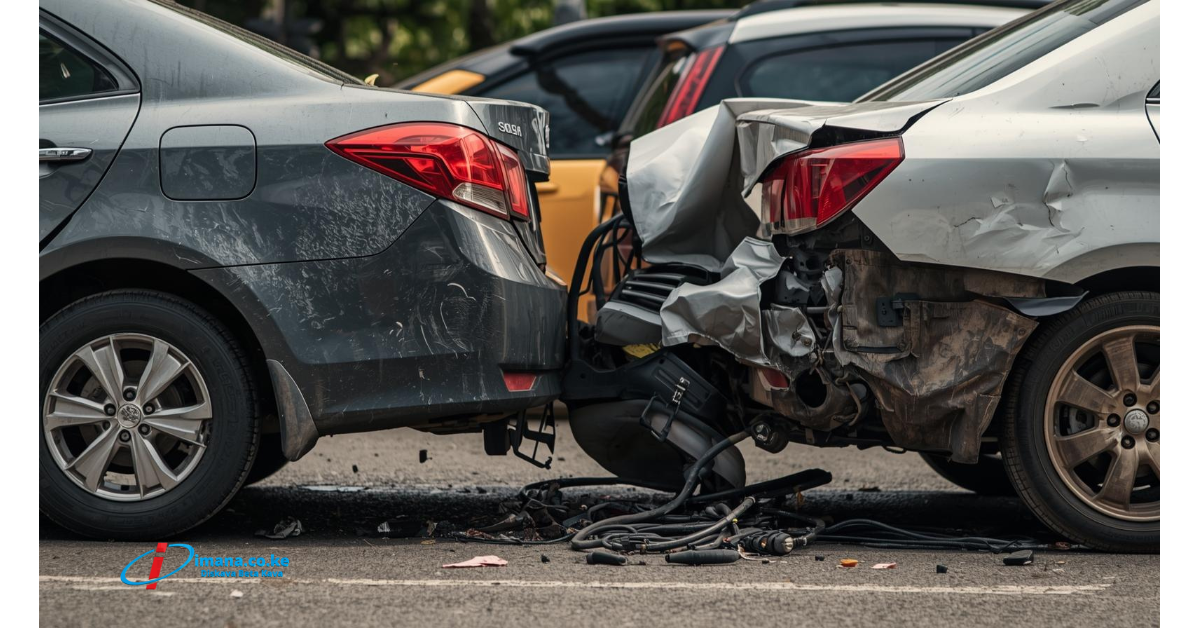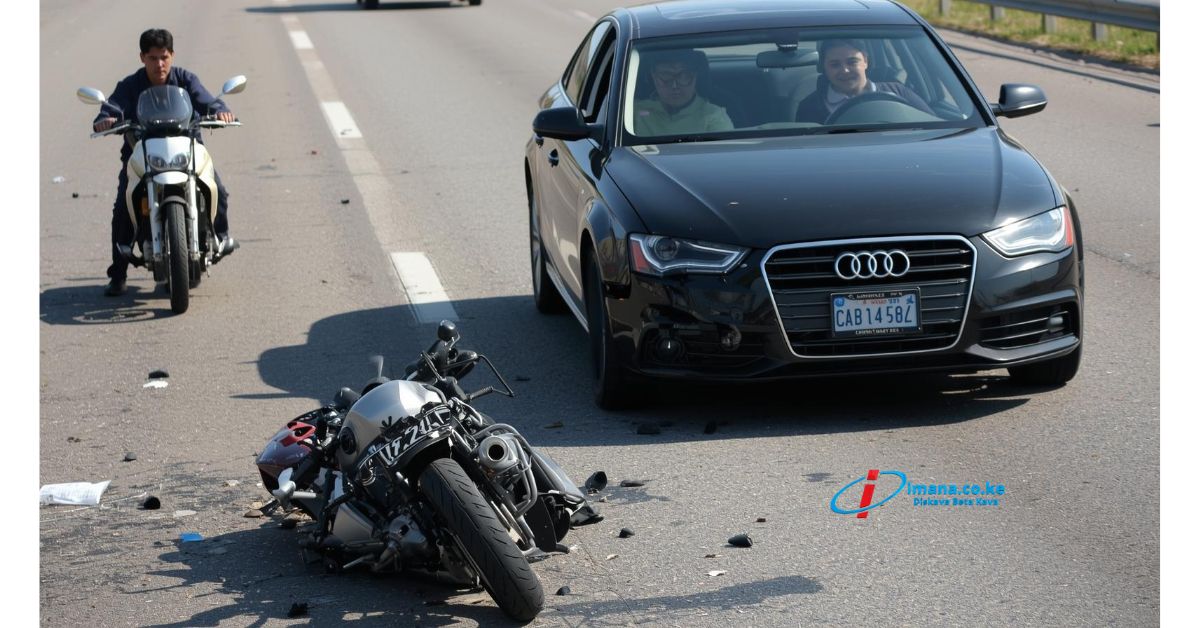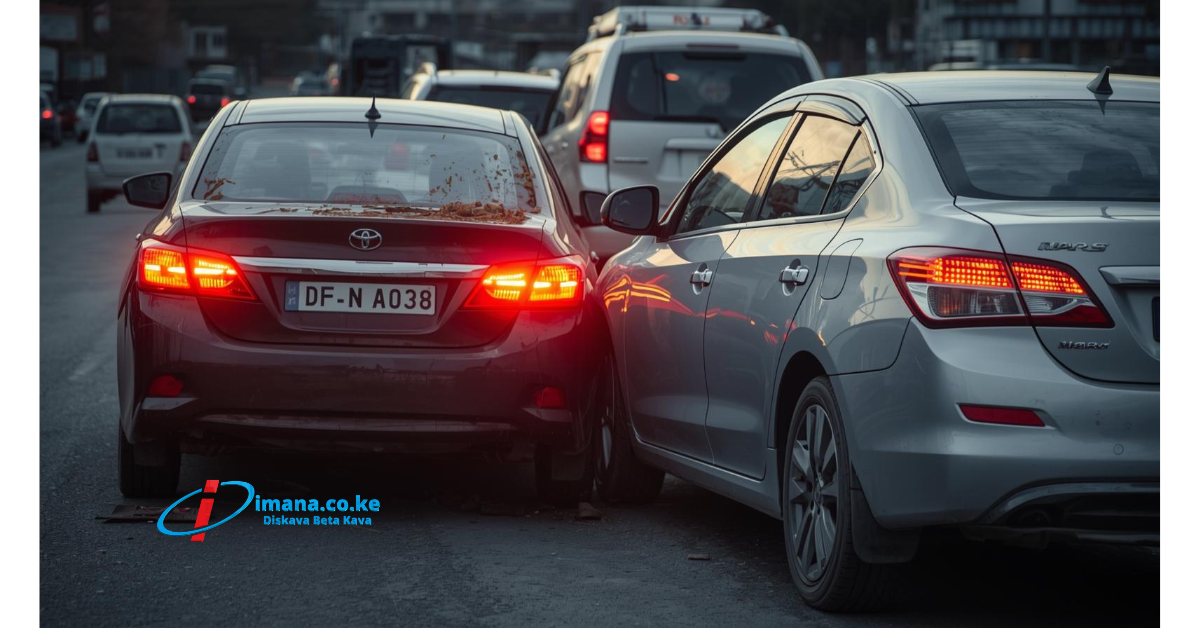
- Author: Raymond
- Category: Car Insurance in Kenya
Navigating a Rear-End Collision in Kenya: A Guide for Third-Party Policyholders
If your car, insured with a third-party only cover, has been hit from behind in traffic, you are entitled to claim for damages from the insurance company of the at-fault driver. Here is a comprehensive guide on the procedures to follow and advice on whether to accept a cash payment from the other driver.
Immediate Steps to Take at the Accident Scene
It is crucial to act promptly and systematically after the accident to protect your interests and ensure a smooth claims process.
- Ensure Safety: First and foremost, check for any injuries to yourself, your passengers, and the occupants of the other vehicle. If anyone is injured, seek immediate medical attention. If the vehicles are in a hazardous position, and it is safe to do so, move them to the side of the road to prevent further accidents.
- Document the Scene: Use your smartphone to take clear photos and videos of the accident scene from various angles. Capture the following:
- The positions of both vehicles.
- The damage to your car and the other vehicle.
- The license plates of both vehicles.
- Any visible skid marks or debris on the road.
- The general environment, including any relevant road signs or traffic signals.
- Exchange Information: Obtain the following details from the other driver:
- Full name and contact information.
- National ID number.
- Insurance company name and policy number.
- Vehicle registration number.
- Identify Witnesses: If there were any witnesses to the accident, politely request their names and contact details. Their account could be valuable if there are disputes about liability.
- Report to the Police: It is a legal requirement in Kenya to report any road accident to the nearest police station as soon as possible, and in any case, within 24 hours. The police will issue you with a police abstract, which is a mandatory document for any insurance claim.
Procedure for Claiming from the At-Fault Driver's Insurance
Since you have a third-party only cover, your insurance will not cover the damages to your own vehicle. Therefore, you must initiate a claim against the insurance policy of the driver who hit you.
Step 1: Notify the At-Fault Driver's Insurance Company
You or your legal representative should formally notify the other driver's insurance company of the accident in writing as soon as possible. This is typically done through a "demand letter." The demand letter should include:
- Your personal details and contact information.
- The date, time, and location of the accident.
- The registration numbers of both vehicles involved.
- A clear description of how the accident occurred, stating that their insured was at fault.
- A preliminary estimate of the repair costs for your vehicle.
Step 2: Compile and Submit the Necessary Documents
You will need to provide the at-fault driver's insurance company with the following documents:
- A duly filled claim form from their insurance company.
- The original police abstract.
- A copy of your driving license.
- A copy of your vehicle's logbook (to prove ownership).
- A detailed repair estimate from a reputable garage. It is advisable to get quotes from a few different garages.
- Photographs of the damaged vehicle.
- In some cases, a vehicle inspection and assessment report may be required.
Step 3: Vehicle Assessment
The other driver's insurance company will likely appoint an assessor to inspect the damage to your vehicle and verify the repair estimates. Cooperate fully with the assessor and provide them with any information they require.
Step 4: Follow-up and Settlement
Keep in regular contact with the at-fault driver's insurance company to follow up on the progress of your claim. Once they have completed their investigations and are satisfied with the documentation, they will make a settlement offer. This could be in the form of authorizing repairs at a specific garage or a cash settlement.
To Accept Cash Payment from the Other Driver or Not?
The at-fault driver might offer to pay you cash on the spot to avoid involving their insurance company. While this may seem like a quick and easy solution, it comes with significant risks.
Disadvantages of Accepting a Cash Payment:
- Underestimation of Damages: It is highly likely that the on-the-spot cash offer will be less than the actual cost of repairs. There may be hidden damages that are not immediately apparent.
- Waiver of Further Claims: Accepting a cash settlement could be legally interpreted as a full and final settlement, meaning you may not be able to claim for any additional repair costs or other related expenses that may arise later.
- No Recourse for Poor Repairs: If the cash received is insufficient for quality repairs, you will have no one to turn to for the difference.
- Potential for Disputes: The other driver may later deny the accident or the agreement, leaving you with no proof.
Advantages of a Formal Insurance Claim:
- Accurate Assessment of Damages: The involvement of an insurance assessor ensures that all damages, including hidden ones, are identified and a fair repair cost is determined.
- Guaranteed Quality of Repairs: If the insurer authorizes repairs at an approved garage, you have a better guarantee of the quality of work.
- Formal and Legally Binding: A formal claim process provides a clear and legally recognized record of the settlement.
- Covers All Associated Costs: A successful insurance claim can cover not only the repair costs but also other related expenses like towing and, in some cases, a replacement vehicle.
When a Cash Settlement Might be Considered:
A cash settlement directly from the other driver might be considered only in cases of very minor cosmetic damage, such as a small scratch. Even then, it is advisable to get a quick estimate from a trusted mechanic before agreeing to any amount. You should also have the driver sign a written acknowledgment of fault and the settlement amount.
Insurance Wisdom
Given that your car was hit from the rear while in traffic, the other driver is almost certainly at fault. Your strongest and safest course of action is to pursue a formal claim through their insurance company. This will ensure that you are fully compensated for the damages to your vehicle and that the repairs are done to a professional standard. It is generally not advisable to accept a cash payment from the other driver, as the risks of doing so far outweigh the perceived convenience.
For a smoother process, consider seeking assistance from a reputable insurance agent or a legal professional who can guide you through the intricacies of a third-party claim.



